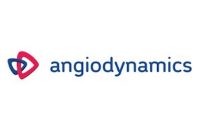ST. PAUL, Minn.–(BUSINESS WIRE)–Cardiovascular Systems, Inc. (NASDAQ: CSII):
Conference Call Scheduled for Today, August 2, 2017, at 3:45 PM CT (4:45 PM ET)
- Revenues of $52.9 million grew 9% compared to fourth quarter last year
- Gross margin increased to 81.7% from 79.7% in the prior-year period
- Net income was $0.8 million, or $0.02 per basic share
- Saline infusion pump recall nears completion
- U.S. Food and Drug Administration (FDA) clears radial access Diamondback 360® Peripheral Orbital Atherectomy Device
- One-year results from LIBERTY 360° study to be presented in late-breaking presentation at the 2017 Amputation Prevention Symposium (AMP)
Cardiovascular Systems, Inc. (CSI) (NASDAQ: CSII), a medical device company developing and commercializing innovative interventional treatment systems for peripheral and coronary artery disease, today reported financial results for its fiscal fourth quarter ended June 30, 2017.
The company’s fourth-quarter revenues were $52.9 million, a 9% increase from the fourth quarter of fiscal 2016. Coronary revenues grew 15% over last year’s fourth quarter, with peripheral revenues increasing 7%. Gross profit margin rose to 81.7% from 79.7% driven primarily by unit cost reductions. Operating expenses declined $1.3 million, or 3%, reflecting cost realignment initiatives implemented last year.
Fourth-quarter net income was $0.8 million, or $0.02 per basic share, improving $5.7 million from a net loss of $(4.9) million, or $(0.15) per share in the prior-year period. Adjusted EBITDA was positive in the quarter at $4.1 million. The company’s cash balance increased to $107.9 million, primarily due to positive cash flow from operations and proceeds from employee stock plans.
Scott Ward, CSI’s Chairman, President and Chief Executive Officer, said, “We’ve made substantial progress over the past 18 months, moving from an organization in transition, to a strong company which is a market leader in treating coronary and peripheral artery disease. Our results highlight the continued improvement of our commercial execution and the strong demand for our unique technology.”
Fiscal year 2017 revenues grew 15% to $204.9 million. Gross margin increased to 80.8% compared to the prior-year’s 80.1% on lower unit costs. Operating expenses declined $31.8 million, or 16%, to $167.0 million. Net loss improved $54.2 million to $(1.8) million, or $(0.06) per common share, compared to $(56.0) million, or $(1.72) per common share, in fiscal 2016.
Added Ward, “In addition to improved financial results, we also delivered on several key objectives in fiscal year 2017, which we anticipate will drive sustained growth and profitability in the years to come. Most notably, we expanded our commitment to building medical evidence for orbital atherectomy in our peripheral and coronary franchises. We received approvals for new orbital atherectomy devices that give our physicians more tools to effectively and routinely treat patients suffering from coronary and peripheral artery disease. Finally, the approval of our Diamondback 360® Coronary Orbital Atherectomy System Micro Crown in Japan marks CSI’s first international expansion, beginning in calendar year 2018. We look forward to building on these successes in the future.”
Saline Infusion Pump Recall Nears Completion
In April, CSI announced a voluntary recall of its 7-10014 Saline Infusion Pump, due to the potential of electromagnetic interference (EMI) present in the hospital environment to cause the pumps to switch to standby mode during use, requiring the pump to be reset prior to continuing treatment. CSI’s saline infusion pumps provide saline and lubricant infusion during orbital atherectomy procedures and electrical power to the company’s orbital atherectomy device. There have been no reports of patients harmed related to pumps switching to standby mode.
As of July 31, nearly all affected customers had received replacement pumps. CSI anticipates fully completing the recall process on or before its target date of August 31.
Added Ward, “The voluntary recall of the saline infusion pump affected about one-half of our customer base. I am pleased to note that we handled this recall efficiently, providing effective support for our patients and physicians during the process. Our ability to accelerate production of the recently approved replacement pump allowed us to deliver new pumps to the majority of our current affected customers and to begin shipments to new customers during July.”
FDA Clears Radial Access Orbital Atherectomy Device to Treat PAD
In June, CSI received U.S. Food and Drug Administration clearance for its new radial access Diamondback 360® Peripheral Orbital Atherectomy Device (OAD) to treat PAD. This extended-length device allows physicians to reach and treat lower limb PAD lesions through a radial artery access site, providing an alternative access point to treat a complicated and at-risk patient population. The Diamondback’s low profile and unique mechanism of action makes it the first, and only, atherectomy device for this emerging peripheral application. The company anticipates commercial availability beginning in early calendar 2018.
Ward said, “We are committed to developing innovative enhancements to our technology that increase the number of PAD patients that physicians can routinely and safely treat. Utilization of the radial artery for peripheral procedures, in lieu of the traditional femoral artery access, has been associated with reduced access site and bleeding complications, same-day discharge, early ambulation and increased patient satisfaction.
“The radial market has been rapidly developing in the United States within percutaneous coronary interventions where radial penetration has grown from less than 2% in 2007 to approaching 30% today. We anticipate similar adoption in above-the-knee peripheral vascular interventions as physicians continue to drive towards reduced invasiveness, increased efficiency and greater patient satisfaction. This device will become an important component in expanding our market leadership position in peripheral atherectomy and improving the quality of care for our patients.”
LIBERTY 360° One-Year Data to be Presented at the 2017 AMP Symposium
On August 10, Dr. Jihad Mustapha, Director of Cardiovascular Research at Metro Health Hospital in Wyoming, Mich., will present one-year results from the LIBERTY 360° study in a late-breaking presentation at the 2017 AMP symposium in Chicago. Included in Dr. Mustapha’s presentation will be subset data, including a breakout of patients by Rutherford Class and treatments with orbital atherectomy.
The LIBERTY 360° study is a prospective, observational, multi-center study evaluating the clinical and economic outcomes of endovascular interventions in patients with symptomatic peripheral artery disease (PAD), including critical limb ischemia (CLI), the most severe form of PAD. The study includes all commercially available technologies, including CSI’s Diamondback 360® Peripheral Orbital Atherectomy System.
The LIBERTY 360° study includes patients with various levels of PAD ranked on the Rutherford Classification scale, including Rutherford 6, those with the most severe form of PAD. Included in the analysis are 500 Rutherford Class 2-3 patients, 589 Rutherford Class 4-5 patients and 100 Rutherford Class 6 patients.
Fiscal 2018 First-Quarter and Full-Year Outlook and Commentary
Ward said, “We posted solid financial results for our fourth quarter, especially given our pump recall. While much of the recall is behind us, our available selling time will continue to be affected during our first quarter as we fully complete the recall process. In addition, our new customer pipeline has declined, due to limited pump availability, which could affect the timing of new account revenue. These effects, combined with the usual slowdown of procedures in the summer months, have been factored into our first quarter guidance. We anticipate that our quarterly revenue growth rate over fiscal year 2017 will improve throughout the year, culminating in a fiscal year 2018 revenue range of $226 million to $233 million.”






